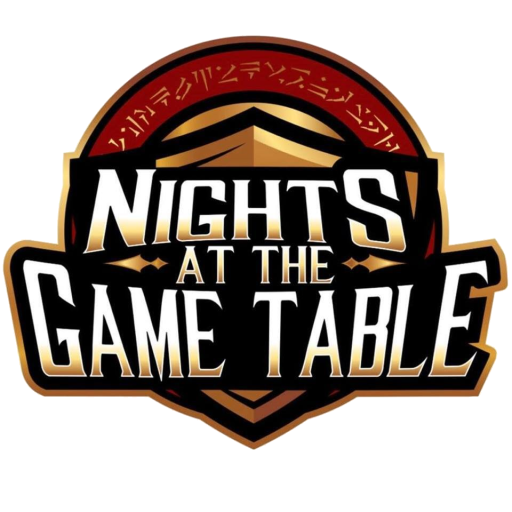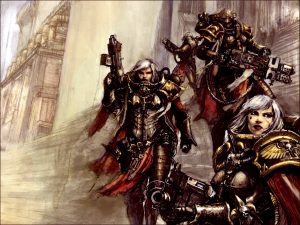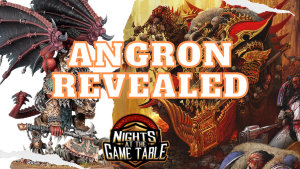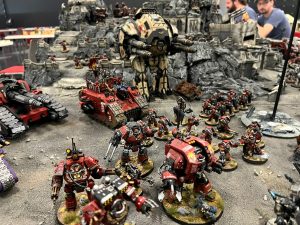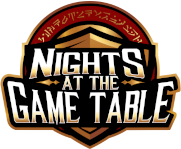Today we are going over some of the core rules for Apocalypse. First off this is honestly a new game with a very different ruleset from 8th edition. In fact its a bit closer in some ways to the old Epic rules from around 2nd edition. This more or less allows Games Workshop to “bring back” epic without having to start an entirely new production line of miniatures. So lets take a look under the hood of the new Apocalypse.
Data Card baisics



To start M, WS, and BS remain the same, and you still roll a d6 for fighting and shooting. A major difference is that the wounds on the datacard are not for individual models but are instead for the entire unit, same goes for attacks. For example, 10 warriors have 2 attacks total and 2 wounds for the entire squad. Where as 20 warriors has 4 for each respectively. Another key difference from regular 40k is the save profile on units. You will notice that the warriors above have an 8+ save.
If we look at their guns we notice quite a few changes. We have an attack profile that says user, which means that when they fire their gauss flayers you roll dice equal to the units attack profile. So either 2 or 4 depending on squad size. With rapid fire doubling this at half range. Other weapons will have a number for their attacks which is used instead. Some weapons have a modifier such as x2, which is a modifier that you would apply to the units attack characteristic.
We also don’t have a Strength or a toughness anywhere , instead we have SAP and SAT which stands for Strength Against Personnel and Strength Against Tanks respectively. You now roll a D12 to see if your attack wounds, the target number depending on if your targeting Vehicles/ Monstrous Creatures, or personnel(infantry). Which of these a unit falls under is listed on their datasheet.
Also, there is currently no points system, instead we have power level, which you use when building your list.
Army Building



Here are some example detachments, in Apocalypse these work very similarly to how they work in 40k with a few differences. In these detachments there is no requirement for an HQ, also they don’t give you command points. In fact there are no command points in Apocalypse. However, if you take an HQ or someone with the character keyword you can nominate them to be the detachments warlord. If the detachment doesn’t contain a character you can instead nominate a unit to be the detachments commander. You then nominate one of your warlords to be your Warmaster.
Command Assets





Command asset cards are replacing command points, Stratagems, and Psychic powers. In addition to building your army list you will make a deck of 30 of these cards.
Deployment
In Apoc you alternate deploying entire detachments, you can even put some into tactical reserves, but this may change depending on the scenario.
The Game Turn

You start by rolling of with you opponent using a D12. whomever rolls higher is said to have initiative for the game turn.

 Start by checking to see if the detachments units are out off command range, which is more than 12″ from your commander or warlord from that detachment. If the Uint is to far away it gets an out of command token. This can have a big impact later in the game turn.
Start by checking to see if the detachments units are out off command range, which is more than 12″ from your commander or warlord from that detachment. If the Uint is to far away it gets an out of command token. This can have a big impact later in the game turn.


 In this step you can set up any units that were set up as reinforcements. Be it outflanking, forward positions, or a form of deepstriking.
In this step you can set up any units that were set up as reinforcements. Be it outflanking, forward positions, or a form of deepstriking.
 You then draw your Command Asset Cards, you draw one card plus the Number of Warlords in your Army.
You then draw your Command Asset Cards, you draw one card plus the Number of Warlords in your Army. 
You Have 3 orders you can use, and in this step you issue Order tokens to each detachment. Placing the tokens face down next to that detachments commander. Once all order tokens have been placed, all players flip over their tokens at the same time.
Order Token Breakdown
Orders dictate what your ENTIRE detachment will do in the Action Phase. Each with their own benefits and limitations. This one is the most flexible, it lets your detachment move, then either shoot or fight in combat.
This one is the most flexible, it lets your detachment move, then either shoot or fight in combat. The Detachment cannot move, but you get a +1 to hit rolls when shooting. The downside is you will take a -1 to hit penalty if you get locked in combat. So proper planning will be important if you plan to use this.
The Detachment cannot move, but you get a +1 to hit rolls when shooting. The downside is you will take a -1 to hit penalty if you get locked in combat. So proper planning will be important if you plan to use this.

You don’t get to shoot, but you get to double your movement! Then you get to fight in close combat! Its important to know that there is no charge phase or overwatch in Apocalypse. So, if you move base contact with an enemy unit you are locked in combat with that unit.
Carnage and Dakka Galore

In this phase you will carry out alternating activations with your detachments. the person with initiative will activate and carry out actions with a detachment and then their opponent will. This continues until both players have activated all their detachments.
Players activate one detachment at a time starting with the player who has initiative. The player resolves that order for the entire detachment. Then, the opposing player activates a Detachment. Play continues back and forth until all detachments have activated.
When resolving an attack on a unit you will roll to hit and then roll to wound. When you roll to see if your attack successfully wounds roll a d12 and see if it beats or equals the SAT or SAP number based on the target. Sat for tanks and monsters SAP for infantry. If your roll beats or equals the target number you put a small blast marker next to the target unit. If there is already a small blast marker next to the unit instead replace it with a large blast marker.
Bringing The Pain
In this phase both players will resolve any blast markers on their units, and test for morale, and check if units route.


If a Unit that has an Out Of Command marker has any blast markers on it, then the units routs and is immediately destroyed. 
Otherwise, you start by making saving throws for the unit using its save characteristic on its unit profile. You Roll a D12 for each small blast marker and if the number is equal to or higher than the target number on your save characteristic then the damage is prevented. However, for each large blast marker you only get to roll a D6. For each failed saving throw the unit takes a damage marker.
If the number of damage markers on a unit is equal to or more than half its wounds characteristic then the unit is critically damaged. As a result its attacks characteristic is halved for the remainder of the battle, and it suffers a -1 to its hit rolls. If the number of damage markers on a unit ever equals or exceeds its wounds characteristic then the unit is destroyed and removed from the battlefield. If all units in an detachment are destroyed then the detachment is considered destroyed as well.

Any Units that have blast markers on them and aren’t destroyed have to take a Morale test. In order to take a moral test you roll a D6 and add the number of blast markers on the unit to the total. If the combined value is higher than the units leadership characteristic You Fail, then the unit takes an additional damage marker!
Thats it, thats the whole turn for Apoc, and you would then proceed to play through these phases again until the game ends. It ends when one side has no units left or if its the end of the 5th turn.
You can become a member and get access to exclusive battle reports, painting tutorials, and tactics by clicking the link: http://page.nightsatthegametable.com/membership…
As always, a big thanks to GW for the images provided for this post!
